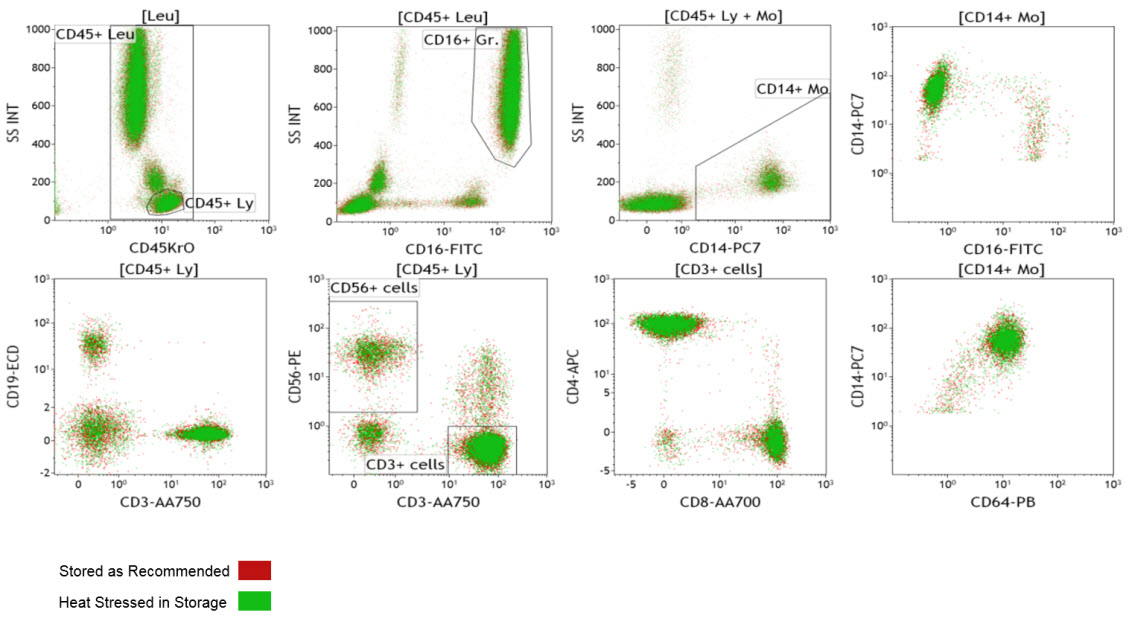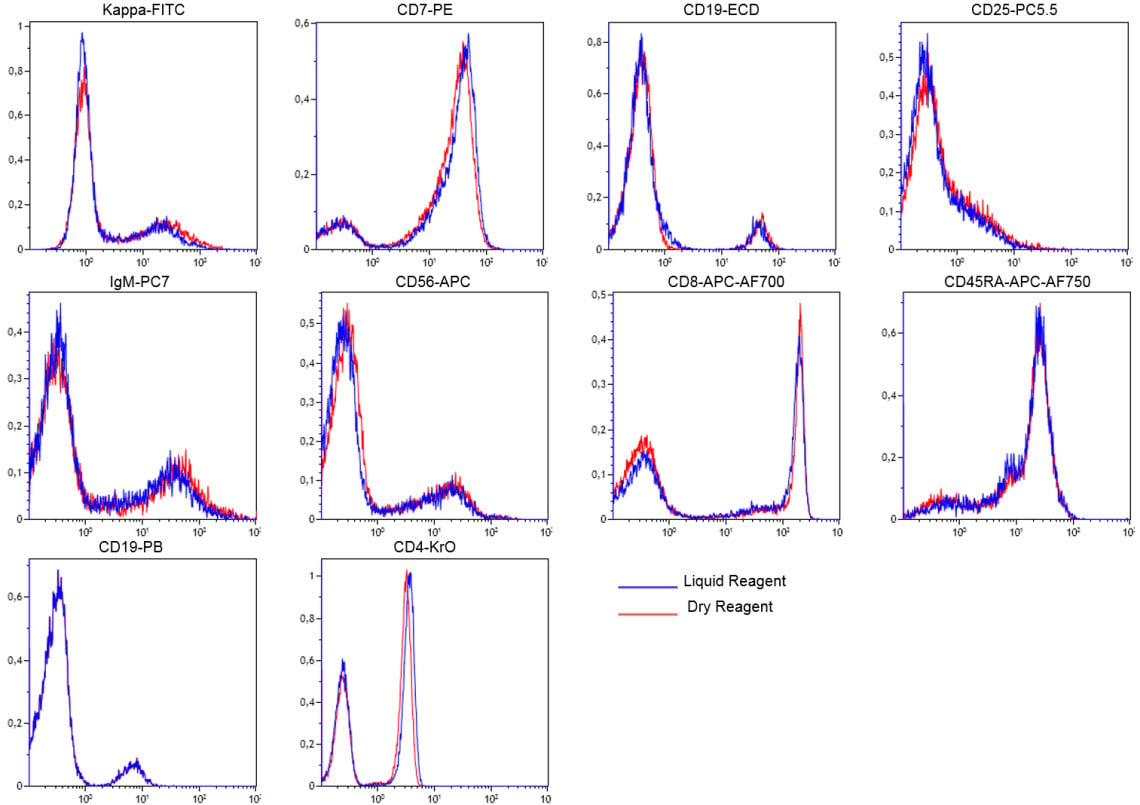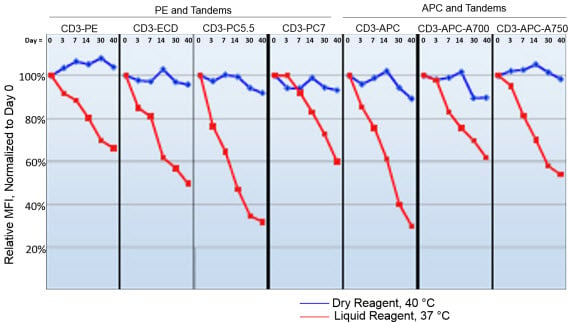Dry Versus Liquid Antibody Reagents
Degradation of the antibody conjugate cocktail due to inappropriate storage conditions or reagent handling may contribute to assay variability. To circumvent these drawbacks, Beckman Coulter has developed the DURA Innovations technology that stabilizes the antibody conjugate in a dry reagent format and enables long term storage at room temperature.
Heat Stress Testing: Dry Reagents Stored at 60 °C

Dried Reagents Tolerate Heat Stress. A 9-color panel was dried down using DURA Innovations technology. Whole blood from three donors was stained using the lot stored at room temperature (red) and a lot stored at 60 °C for 7 days (green) and lysed with VersaLyse (Part Number A09777) using the protocol in the instructions for use. Dot plot overlays compare the staining results from each condition. Even after heat stress, the dry reagent shows consistent staining compared to the un-stressed reagent.
Equivalence Testing: Dry and Liquid Reagents

Comparison of Staining Using Liquid and Dried Reagents. A 9-color panel was dried down using DURA Innovations technology. Whole blood was stained using the dried (red) and the liquid antibodies (blue) and lysed with VersaLyse (Part Number A09777) using the protocol in the instructions for use. Histogram overlays compare the staining results from each reagent analyzed in a lymphocyte gate. Staining profiles are similar with dry and liquid reagents.
Heat Stress Testing: Dry and Liquid Reagents

Comparison of MFI After Heat Stress. CD3 was conjugated to PE and its tandems or APC and its tandems. A sample from each was dried using DURA Innovations technology. The dried reagent was heat stressed at 40 °C and the liquid reagents were heat stressed at 37 °C. The reagents were used to stain cells at various timepoints as indicated in the graph and the MFI was measured and graphed relative to day 0, unstressed. Over the 40 days, the liquid reagent degrades and the decrease in the MFI ranges from 35% to 70%. However, the dried reagents are observed to be stable with less than 10% decrease in the MFI for all conjugates.
Stability Testing: Dry Reagents Aged 200 Days

Aged Reagent Performs Similar to Newly Manufactured Lot. A 9-color panel was dried down using DURA Innovations technology. Whole blood was stained using the new lot (red) and a lot aged 200 days (blue) and lysed with VersaLyse (Part Number A09777) using the protocol in the instructions for use. Dot plot overlays compare the staining results from each lot. After aging the panel for 200 days the staining pattern is consistent with the staining from a freshly prepared reagent.

